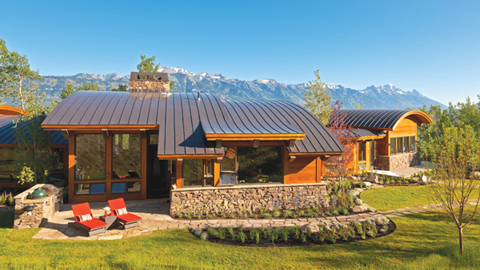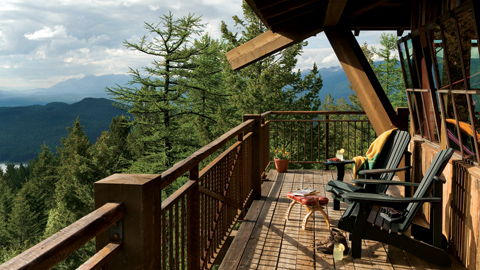Even the lushest landscape can present unique challenges, so it pays to enlist the help of a pro to ensure your landscape suits your lifestyle. Landscape architects work with you to maximize your property, from analyzing the site to designing patios and decks, selecting plants, and mitigating environmental concerns. They can help you transform your ideas into reality, down to the smallest detail.
Choosing a Partner
As you would with any professional partner, research potential landscape architects before hiring one. Landscape architects must be licensed in all 50 states, and most have a Bachelor’s or Master’s degree in the field. Look for someone who is experienced with residential design in your area. According to the American Society of Landscape Architecture, there are 16,000 licensed landscape architects in the United States, but some specialize in public or commercial spaces. Ask to see a portfolio so you can see a spectrum of designs. Ideally, you should be able to speak with prior clients or see a list of references.
You should choose someone who is able to help you determine a realistic budget and clearly understands your lifestyle. And keep in mind that, just as with your home builder, this is someone you’ll be working closely with, so hire someone you’re comfortable with.
Your log or timber frame producer may have a landscape architect in house or may be able to recommend independent professionals they’ve worked in the past, but ultimately you should hire the person who is the best fit for your particular project. “Just like selecting any professional you should shop the market, view their work, and talk to a few past clients,” says Allen Halcomb, president of MossCreek in Knoxville, Tennessee. “With any design professional part of their skill is technical, the other part is personality. Partner with someone whose personality fits.”
“Choose someone who understands just what a log home is and its construction,” says Bart Sauls, sales representative at Coventry Log Homes in Woodsville, New Hampshire, noting both the limits and possibilities. “After all, a log home is essentially the outdoors brought inside. You now have the beauty of nature and all its attributes at your fingertips.” A talented landscape architect will capitalize on that natural beauty rather than working against it so that the house blends with the environment.
Landscape construction is another concern. Some landscape architecture firms do construction and even maintenance; others only offer design services. Find out how far your landscape architect will take your project.
Get Started on the Right Foot
Don’t let landscape design be an afterthought. You’ll be looking at your property every day through your home’s windows, when you’re sitting outside, and as you drive in. A professionally designed landscape can add as much as 15 percent to the value of your home, and unlike many home improvements, that value can grow (literally) over time. For a well-planned, fully integrated home, you should bring a landscape architect on board from the start. He or she can help advise you on the building site and point out potential challenges before building even begins. He or she will work alongside the home builder to determine the best way to orient the house.

Photo by Karl Neumann
“I like to get the landscape architect involved right from the beginning because you want to determine how the design is going to flow to the outside,” says Mathew Sterchi, vice president of sales and marketing at StoneMill Log & Timber Frame Homes in Knoxville, Tennessee. “It helps determine placement of the windows and doors and helps ensure the exterior and interior blend together.” Sterchi notes that many people don’t think that far ahead. “A lot of people want to get the house built and then address the landscaping later. But you can future plan without actually building those items during construction,” he says. “It gives you a master plan to work with.”
“Having the key members of the team together from the inception of a project weaves the home into the landscape while realizing every possible opportunity to make the home and landscape successful,” says Dale Nussbaum, principal and owner of Nussbaum Group in Seattle, Washington. “View lines are considered, impacts on site and vegetation are reduced (as are the costs of replacing them later), utility planning is maximized, and everything just works better.”
Open Lines of Communication
With any project, communication between parties is essential. Be sure all parties understand communication protocols and responsibilities from the outset. Outline the scope of work you expect from your landscape architect to ensure you are on the same page, and be clear about your budget before any work is done.
It’s always helpful to do a little bit of thinking in advance about what you envision for your property. Do you like formal lines or would you prefer a riot of color? Is environmental impact a big concern for you? Are you willing to do some maintenance? How do you want your landscape to look next spring? How about in 10 years? While your landscape architect will likely have a questionnaire or interview prepared to learn about what you want, you should ask yourself all of these questions in advance of your initial meeting. Visuals are always a good idea. Bookmark landscape ideas that appeal to you, or cut out pictures from magazines. Take photos of local homes and landscapes that you like.
“Keeping the lines of communication open throughout the project is key to its success,” says Nussbaum. “Good early planning is critical, but keeping the landscape architect involved throughout the construction of the project ensures that the initial concept remains intact through changes, unexpected conditions, or to simply realize new opportunities.” Nussbaum suggests making plans to keep the landscape architect involved regularly, especially to at key milestones as the project advances.
Quality landscape design completes your home and makes it an integrated whole both inside and out. Working with your landscape architect and log or timber frame producer as a team will help ensure that attention is given to every detail along the way, for a smooth process and a product that everyone will be satisfied with.

